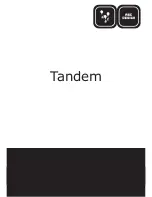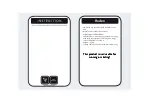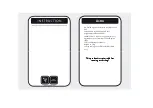
Start protection after compressor start
This protection time starts as soon as the
compressor is switched on. When the compressor
is switched off, it cannot be switched on again until
this time has elapsed. This is to avoid excessive
activation and to increase the service life as a
consequence.
Start protection compressor after
compressor stop
This protection time starts as soon as the
compressor is switched off. The compressor cannot
be switched on again until this time has elapsed.
This is to avoid excessive activation and to increase
the service life as a consequence.
Start protection compressor after mains On
Activation of the control output is prevented after
"Mains On" until this time has elapsed. This
function can be used, for example, to avoid that
several controllers are switched on at the same,
which would result in a high load on the power
supply network.
On-time in emergency operation
Cycle time in emergency operation
With these parameters, you can define how the
compressor is to behave in the case of a sensor
fault. In emergency operation, the compressor is
operated in a cycle of
. The on-time in
is a
percentage of the cycle time, with 100% meaning
that the compressor runs continuously and 0%
meaning that the compressor is off all the time. In
deep-freeze stores, the compressor should
continue operation in order to avoid defrosting. In
normal cold stores above 0°C continued operation
might result in frost damage, however. During
emergency operation, no defrosting will be
performed.
Assignment of sensors for "super-frost"
function
With this parameter, you can set which sensor input
is to be assigned to the "super-frost" function.
Depending on the sensor design, it can also be
used as core and/or product temperature sensor.
The selected sensor must be set up accordingly in
the
parameters.
"super-frost": lime limit,
"shock-frost", "max. refrigerating power"
"super-frost": temperature limit,
"shock-frost", "max. refrigerating power"
"super-frost": deactivation,
"shock-frost", "max. cooling power"
If this function is activated, the lower warning limit is
deactivated and the compressor is on permanently.
In
, you can define if automatic shut-down is to
be performed and if this automatic shut-down is to
be limited by time only or by temperature, too.
Limitation by time is defined via
, the
temperature condition is defined via
.
Password for parameter level
With this parameter, you can set the password for
parameter level
.
Defrosting control
circuit 1
Assignment of evaporator sensor
(defrosting sensor)
With this parameter, you can set which sensor input
is to be used as the evaporator/defrosting sensor.
The selected sensor must be set up accordingly in
the
parameters.
Defrosting interval
The defrosting interval defines the time after which
a defrosting operation is started. Once the defro-
sting operation is triggered, the defrosting interval
starts again. A defrosting operation can also be
triggered by pressing the
UP
button ("manual defro-
sting“) for at least 3 seconds or another parameter-
ised button. Via the internal week timer, defrosting
can also be started in real time. Once switched on,
the controller starts refrigeration immediately and
will trigger the first defrosting operation as soon as
the time set in
has elapsed. If [
=0], no auto-
matic defrosting operation will be performed.
Defrosting mode
In this parameter, you can define if defrosting is to
be performed and, if yes, how it is to be performed.
You can choose among simple shut-down of the
compressor, defrosting by electric heating or by hot
gas. Electric defrosting will always be performed
after a compressor break, defined in
. Hot gas
defrosting will always be performed directly after a
refrigeration phase. Additionally, you can define via
parameters
and
if the cold store temperature
is to be lowered before defrosting.








































